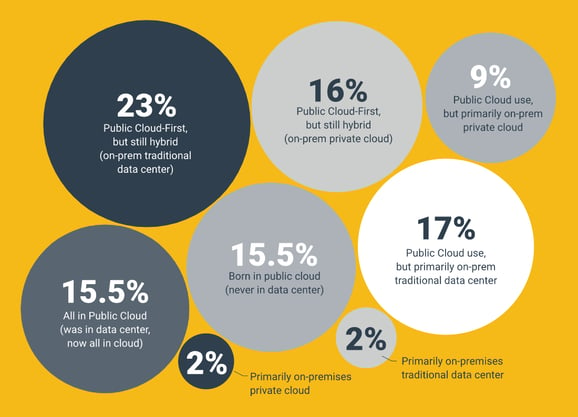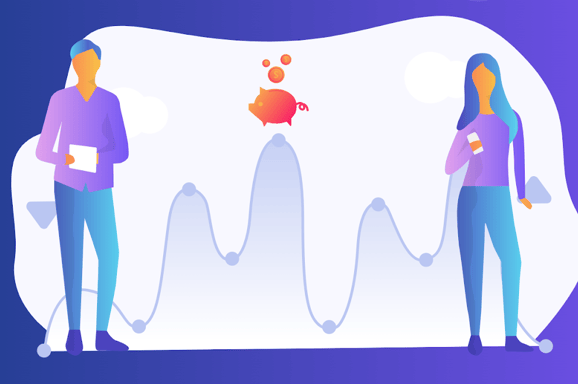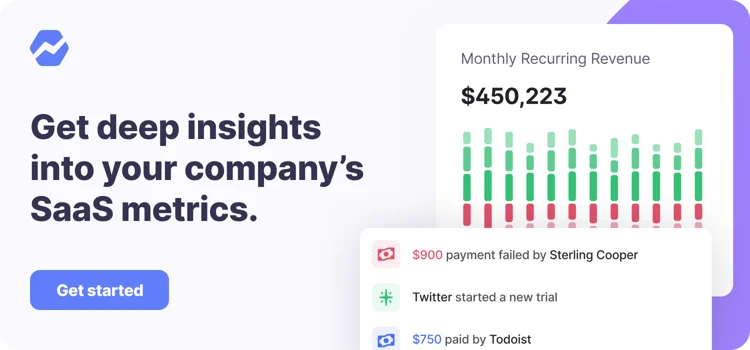Table of Contents

In recent years, a new discipline of financial management has emerged in response to cloud technologies and organizations growing reliance on cloud IT architectures and cloud-based business processes.
FinOps, which stands for Financial Operations, combines the latest technologies and methods to help businesses scale their financial processes adequately and efficiently. In this blog post, we’ll be covering some of the FinOps fundamentals and exploring how FinOps can help businesses optimize their cloud usage and expenditure.
What Is FinOps?
Over the previous decade, many companies have embraced cloud-based services. While it has many advantages, one consequence of the general shift towards cloud computing is that without keeping a close eye on them, the fees incurred by cloud service providers can quickly skyrocket.
FinOps refers to an operational model for financial management that orients itself towards the optimization of a company’s cloud usage. It includes techniques for monitoring cloud usage, streamlining computing processes, and prioritizing tasks in the most cost-effective way.

Image source
The Scalability of Cloud Solutions
Cloud-based approaches were once seen as a high-tech solution reserved for cutting-edge IT businesses. These days, more and more companies are using some kind of cloud option in their everyday operations.
From the widespread use of secure, off-site data storage, to the growing digitization of business communications, cloud computing is an increasingly ubiquitous feature of modern business.
One of the major advantages of the cloud is its scalability. With flexible payment plans and real-time adjustments to service provision available from most cloud platforms, the cloud is helping businesses of all kinds scale up or down as and when they need.
From meeting surges in demand for ecommerce to helping to reduce contact center shrinkage, cloud infrastructure’s scalability has been a massive advantage to many industries. But just because the cloud can boost the efficiency of resource usage, doesn’t mean it necessarily does. That’s where FinOps comes in.
The Three Stages of FinOps
To ensure that the scalability of cloud computing is actually boosting your company’s financial performance, it is vital that you track cloud usage and implement it efficiently. If not, costs can rapidly escalate and get out of hand.
To keep costs down, you should employ a robust FinOps framework that monitors and manages all aspects of your organization’s cloud usage. It is useful to consider a three-stage model of FinOps.
You might see the three stages of the FinOps journey referred to as inform, optimize, and operate, a model popularized by the FinOps Foundation. While the inform-optimize-operate system has its place, in order to cut through the jargon, I prefer the terms inform, analyze, and act.
Keep in mind that in either model, the three phases do not necessarily demand a linear, chronological journey from beginning to end, but can happen simultaneously and iteratively.
1. Inform
The first phase of the FinOps process should always be gathering the necessary data. You will need to compile information on the cloud usage and expenditure of each of your business’s different departments and organize it in an accessible way.
The most straightforward way to gather this data is simply to survey all departments within your organization that have some reliance on cloud computing processes.
A typical survey might ask questions like what was your monthly cloud expenditure for the last six months? Which cloud service providers do you use? If you use multiple providers, which service does each one provide, and what is the ratio of usage between providers?

Image source
In sectors that only mobilize cloud computing in an auxiliary capacity, calculating cloud costs is a relatively straightforward task. For some businesses, however, this stage of FinOps can be more complex.
For example, SaaS companies might deploy multiple cloud architectures in parallel and rely on more than one cloud service provider to house specific data sets or regulate available features for tiered customers. Because of the potential for complexity in the sector, SaaS businesses that build a transparent data model for their cloud usage tend to perform better and are valued higher by investors.
2. Analyze
Once you have amassed the necessary usage and cost data, the next step is to calculate how your organization can most efficiently allocate cloud resources to reduce expenditure.
Ultimately, the purpose of analysis in FinOps is to maximize profits. This means using the minimum amount of resources and the lowest possible cost for the maximum returns. Again, things get slightly more complicated for SaaS businesses who often have to take unearned revenue into account when calculating their profits. If this is the case for your business, it is even more important not to overspend on your cloud service.
A key aspect of the analysis stage of your FinOps program is the prediction of future cloud resource requirements, known as usage forecasting. FinOps teams can use predictive analytics models to estimate what your various cloud resource needs will be for the year ahead, helping you to budget accordingly.
Knowing what your expected requirements are can also help you to take advantage of cheaper prepaid resources and VoIP call center solutions offered by cloud providers.
As well as predictive analytics, a related but separate branch of data analysis is the field of prescriptive analytics. Rather than being oriented towards the prediction of future usage, prescriptive analytics aims at calculating the statistically optimal course of action based on known data.
In FinOps, this means using what is known about cloud resource usage to determine how a given cloud usage framework can be made more profitable. The application of prescriptive analytics can tell you if a certain cloud task is worth continuing, or if it can be optimized by making adjustments to the cloud processes used.
With the right FinOps analytics processes in place, you can be confident that you are not overspending on resources at any given time. For businesses that find themselves scaling rapidly, this can prove the be one of the most important factors impacting whether you are able to meet customer demand without breaking the bank.

Image source
3. Act
The third stage of the FinOps cycle is the point at which you apply the findings of the information gathering and analysis phases.
Actions should be aligned with a holistic business strategy that takes the insights of your FinOps program into account alongside other sources of data and analytics. For example, a cost-benefit analysis of porting number from your traditional PBX system (see what is a PBX phone system?) to a cloud-based alternative will draw upon multiple data streams, not just those generated by your cloud usage.
It is best not to think of acting upon the insights of your data gathering and analysis efforts as a final stage, but rather a continuous process of improvement. As such, FinOps best practice involves continuously evaluating the metrics you’re tracking and ensuring they reflect your business objectives and the latest developments in cloud service.
FinOps Tools
As a discipline that’s rooted in technology, it should come as no surprise that there are some pretty handy FinOps tools available to help you optimize your cloud usage. Cost management software, financial modeling tools, and EDI systems are three such technologies.
Cost Management Software
Cost management and optimization tools can help you save money by highlighting unnecessary expenses such as unused instances or superfluous instance sizing. Examples of cost management software include in-platform cost optimization modules like GCP Billing and AWS Cost Explorer. Alternatively, you can employ custom cost optimization software.
Financial Modeling Tools
As well as dedicated cost management software, another key component of the FinOps toolkit is a powerful financial modeling tool like Forecast+. Financial modeling software like Forecast+ allows you to forecast your revenues, expenses, and bank balance, helping you to make the most informed business decisions based on your company’s anticipated future.

Image source
EDI Systems
Although FinOps has a reputation for using the latest data analytics techniques that include machine learning and artificial intelligence, there is also space for less sophisticated but equally useful technologies within the scope of FinOps.
EDI, which stands for electronic data interchange, is one such technology. EDI facilitates the exchange of documents and transactions between trading partners in a standardized electronic format. In order to integrate EDI into your FinOps strategy, make sure you are using a cloud-compatible EDI system.
Selecting your EDI platform is actually a very important decision from a FinOps perspective. Some EDI systems lend themselves more to rapid scaling, for example. What’s more, if you process many transactions over EDI, you should also consider whether your system supports multithreading – a feature that accelerates processing times when handling multiple transactions.
Conclusion
Adopting a FinOps framework can be a worthwhile endeavor for any company that has to manage cloud expenditure. If you anticipate your cloud usage scaling up any time soon, it is especially important to implement the right processes and principles early on.
By integrating FinOps into your overarching business strategy, including your financial modeling and business communications plans, you can optimize your cloud resource usage and ensure you have a clean and reliable data pipeline across your cloud-based processes.
Now that you know what FinOps is, and how it can help your business scale its financial processes, all that’s left to do is design and implement a FinOps program of your own.

